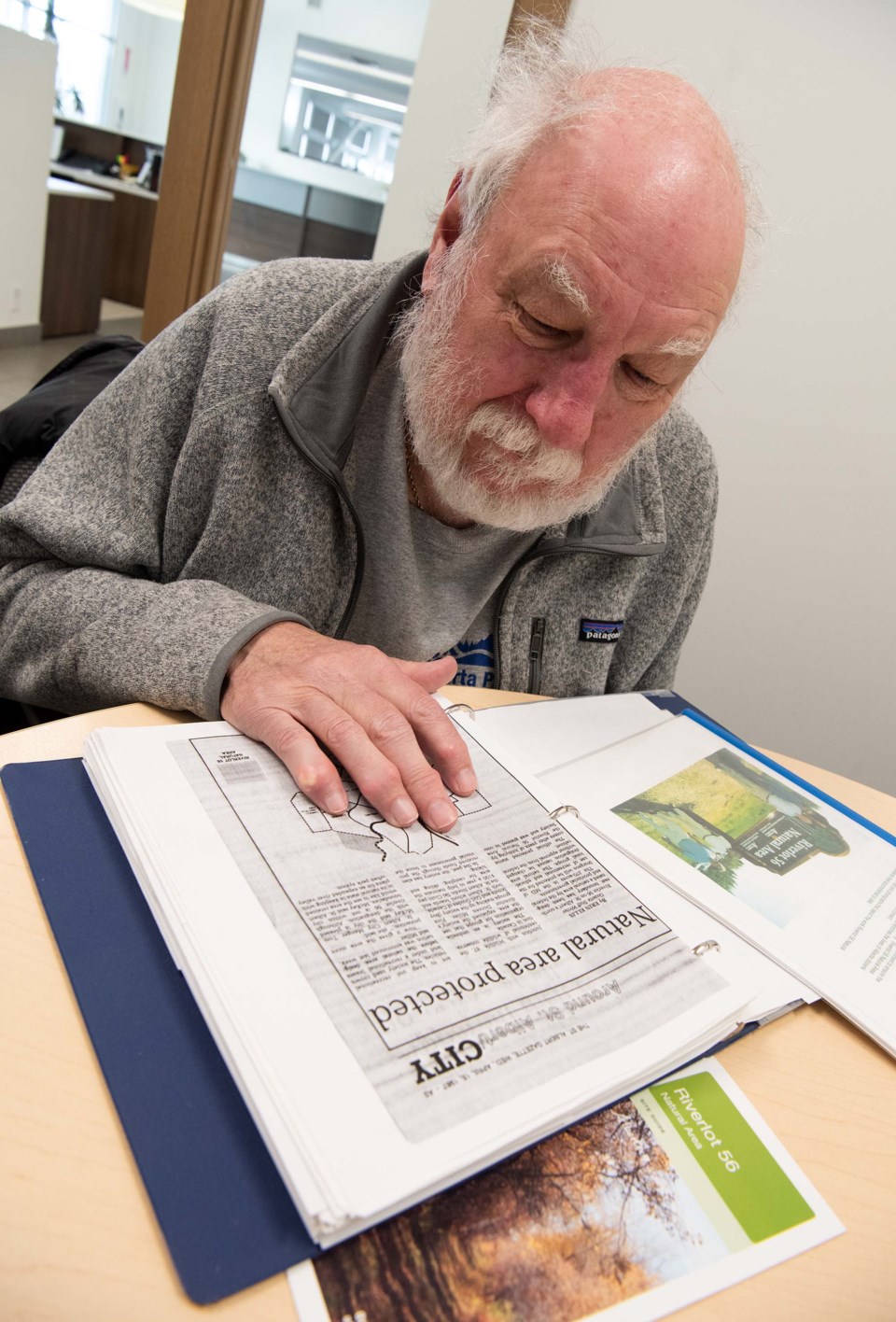Georges Binette has roamed Riverlot 56 for close to 45 years.
He had just come back from Australia around 1975 and had taken up cross-country skiing, he recalled. He heard the St. Albert Nordic Ski Club (STANSKI) had trails in the area and decided to check it out.
“It wasn’t called Riverlot 56 back then,” he recalled.
“We used to call it Poundmaker.”
That first encounter led to a lifelong relationship with what was then an isolated patch of forest along the Sturgeon River – a relationship that’s now in question as the province proposes to remove the river lot from the parks system.
“We have this gem in the middle of an urban setting,” Bennett said, one that can be used by anyone for free.
This issue, the Gazette presents a brief guide to the river lot for those who haven’t heard of or experienced this gem.
Place of history
Riverlot 56 is a 108-hectare patch of field and forest next to the Sturgeon River on Poundmaker Road. It’s currently a protected provincial natural area, which means it is subject to many development restrictions.
The region is called a river lot because it was one of the original river lots set down in the 1900s during the settlement of St. Albert. Irishman William Cust settled here in 1877 and passed it to his grandnephews John and James upon his death in 1908, Black Robe’s Vision reports. The federal government bought it in 1920 and built the Edmonton Indian Residential School on the far east end on the site of what is now Poundmaker’s Lodge.
In 1965, the federal government sold the remainder of the river lot to the province. It was originally slated to be the site of Alberta’s third university, but in 1971 the Lougheed government instead decided to put that university in Athabasca. The City of St. Albert annexed a chunk of the river lot for a cemetery in 1979.
It was around the 1970s that area residents started using the region for camping, skiing and nature interpretation, Binette said. The place was about two miles outside of St. Albert, which at the time ended at Boudreau Road.
“It was like being in the middle of nowhere,” Binette said of the place, and very quiet.
The river lot became a frequent campsite for Girl Guides, Boy Scouts, and outdoor ed. students, Binette said. But it also drew snowmobilers and bush-partiers, the latter of which would smash the Guides’ tent platforms and litter beer bottles everywhere.
Wanting to protect it, Binette and about six others representing the St. Albert Archers, Boy Scouts, Girl Guides, STANSKI and the Catholic and Protestant school boards formed the Riverlot 56 Natural Area Society in the early 1970s and convinced the province to make the place a designated natural area in 1982. The society incorporated and became the park’s official stewards in 1983, with the park officially opening in 1987.
Nature preserved
While the society has added wider trails and interpretive signs since, Binette said much of the river lot has been left untouched. The forests there likely date back to settlement times, making this one of the few intact river lots in the St. Albert area.
Society member Dan Stoker, who built the interpretive signs in the upper part of the lot in 2002, said the river lot is home to many animals, including deer, moose, foxes, coyotes, porcupines, mice, voles and pocket gophers.
“It is certainly in St. Albert one of the better places to go bird-watching,” he said, with one 1971 survey spotting some 86 species there.
Today, Riverlot 56 plays hosts to hundreds of skiers, athletes and nature-lovers year-round. Volunteers put in hundreds of hours each year to clear and maintain its trails, and have recently started planting thousands of trees to reforest its cleared areas.
Stoker said he and other volunteers had put in a huge amount of work to protect this area and were upset it could have its parks status removed.
“We’re hoping it’s maintained as a natural area,” he said.
Binette said the society is still seeking information from the province on how its parks plan would affect Riverlot 56.




